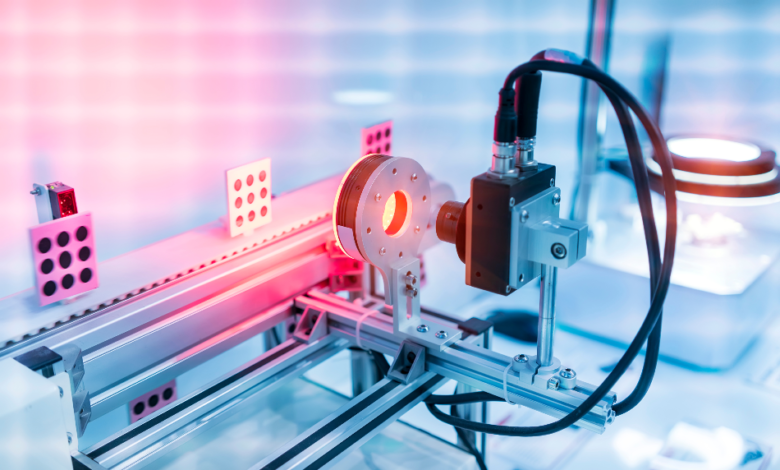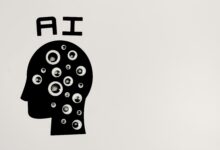Why Machine Vision Systems Are Essential for Modern Web Inspection

In today’s fast-paced manufacturing landscape, ensuring the quality of continuous materials like plastic films, paper, metal foils, and textiles is paramount. Traditional inspection methods often fall short in detecting defects promptly, leading to increased waste and compromised product quality. Enter the web inspection system, an advanced solution that leverages Automated Optical Inspection (AOI) systems and machine vision systems to revolutionize quality control in production lines.
Understanding Web Inspection Systems
A web inspection system is designed to monitor and assess the quality of continuous material surfaces in real-time. By employing high-resolution imaging devices and sophisticated processing units, these systems detect surface defects such as scratches, stains, holes, and misalignments as materials move through the production line. This immediate detection facilitates prompt corrective actions, ensuring that only products meeting stringent quality standards proceed to the next manufacturing stage.
Core Components of a Web Inspection System
- Imaging Devices: High-resolution cameras or Contact Image Sensors (CIS) capture detailed images of the material surface. Line scan cameras are particularly effective, capturing data line-by-line as the material moves beneath them, ensuring comprehensive coverage without motion blur.
- Illumination Systems: Proper lighting is crucial for highlighting defects. LED lighting configurations are commonly used to enhance defect visibility, with setups tailored to the specific material and defect types.
- Processing Units: Equipped with high-speed processors and specialized software, these units analyze captured images in real-time. Utilizing machine vision algorithms, they compare images against quality standards to identify and classify defects.
- Software and User Interface: Operators interact with the system through intuitive interfaces that display real-time data, defect classifications, and analytics. This facilitates informed decision-making and process optimization.
- Alarm and Feedback Systems: Upon detecting defects, the system can trigger alarms, halt production, or mark defective areas for further inspection. Some systems offer closed-loop feedback, enabling automatic adjustments to the production process to mitigate defect recurrence.
The Role of AOI Systems in Web Inspection
Automated Optical Inspection (AOI) systems are integral to web inspection, automating the detection of surface defects with precision and speed. By integrating high-resolution cameras with advanced image processing software, AOI systems offer several advantages:
- High Accuracy: AOI systems detect minute defects that might be overlooked during manual inspections, ensuring a higher standard of quality.
- Speed: Automated inspections are conducted rapidly, keeping pace with high-speed production lines without causing bottlenecks.
- Consistency: Unlike human inspectors, AOI systems provide consistent evaluations, reducing variability in quality assessments.
- Data Collection: These systems collect and analyze inspection data, providing insights into defect patterns and aiding in process improvement.
For instance, Intelgic’s AI-powered AOI system delivers comprehensive inspection automation solutions across various industries, ensuring precise defect detection and enhancing overall manufacturing efficiency.
Machine Vision Systems: Enhancing Inspection Capabilities
Machine vision systems combine high-resolution imaging with advanced processing algorithms to interpret visual information from the production line. In web inspection, these systems perform critical functions:
- Defect Detection: Machine vision systems identify surface defects such as scratches, stains, and holes by analyzing images captured during the inspection process.
- Dimensional Measurement: They ensure that materials meet specified dimensions and tolerances, verifying aspects like width, thickness, and alignment.
- Pattern Recognition: These systems detect and verify patterns, textures, and other visual features, ensuring consistency and adherence to design specifications.
Intelgic automates the product defect detection process with AI-driven machine vision systems, delivering comprehensive solutions for manufacturing. Their advanced technology detects a wide range of product defects with greater accuracy and speed than human inspectors.
Applications Across Industries
Web inspection systems are utilized across various industries to maintain quality control:
- Textile Industry: Detecting defects such as holes, stains, and irregular patterns in fabrics to ensure high-quality textile products.
- Paper Manufacturing: Identifying issues like wrinkles, tears, and color variations in paper rolls to maintain consistency and reduce waste.
- Metal Processing: Inspecting metal foils and sheets for surface defects like scratches, dents, and corrosion, crucial for applications requiring high precision.
- Plastic Film Production: Ensuring plastic films are free from defects such as gels, black specks, and pinholes, which can affect performance in packaging applications.
Benefits of Implementing Web Inspection Systems
- Enhanced Product Quality: Early detection and correction of defects ensure that only products meeting quality standards reach consumers, enhancing brand reputation.
- Waste Reduction: Identifying defects in real-time minimizes the production of defective materials, reducing waste and associated costs.
- Increased Productivity: Automated inspections allow for continuous production without the need for manual checks, streamlining operations and increasing throughput.
- Data-Driven Insights: Collecting and analyzing inspection data enables manufacturers to identify patterns, optimize processes, and implement preventive measures to reduce defect occurrence.
The integration of web inspection systems, powered by AOI and machine vision technologies, represents a significant advancement in manufacturing quality control. By automating defect detection and providing real-time feedback, these systems enhance product quality, reduce waste, and improve overall production efficiency. As industries continue to seek higher standards and greater efficiency, adopting advanced web inspection solutions will be pivotal in achieving these goals.





